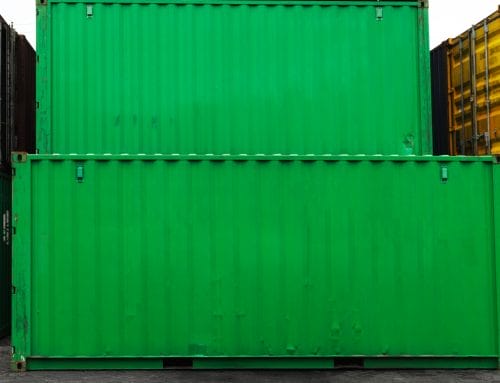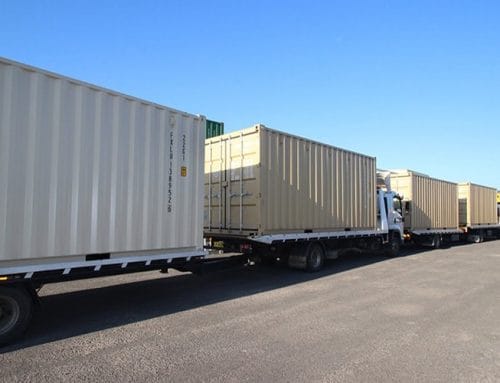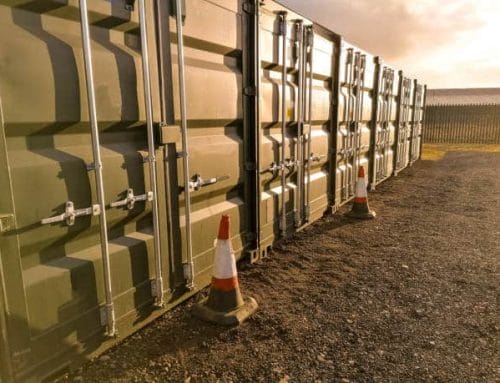If you’ve ever looked at a shipping container and seen nothing more than a massive steel box, you’re not alone. However, the humble shipping container has much more to offer than you might think at first glance.
The untold story, one that so many of us are completely unaware of, is how these steel giants have delivered over the decades, not just goods, but global change.
A key player in the development of the global economy and a contributor to positive change in developing nations, shipping containers have a history to be truly proud of.
If you’re ready to rethink what you understand about shipping containers and their role in history, then this guide is for you.
The Evolution Of Global Trade & Shipping Containers
The first shipping container, designed and manufactured by trucking company magnate Malcom McLean, made its debut in 1956.
Initially buying an old oil tanker in the mid-1950s as a vehicle to carry trucks, McLean soon realised this was not going to work and shifted his focus to containerisation.
Hoping to overcome the issue posed by the loose objects that took extensive time to load and unload – known as breaking bulk, Mclean introduced shipping containers.
Very quickly, this idea took off and globally, containers began to be manufactured to standardised sizes and global shipping took off at a faster rate than ever before.
Reduction In Shipping Costs
By creating interlocking, stackable containers, McLean reduced the cost of loading and unloading cargo by over 90% and made it much more efficient.
Transportation costs, whether via truck, train or ship were also greatly reduced. Containers also made it possible to pack more into each journey for better revenue and cheaper prices.
The combination of greater trade volumes, reduced transport and loading/unloading costs revolutionised the shipping industry.
Boosted Global Economy
Of course, this revolution in transport had a knock-on effect on global trade. Goods could be moved with greater efficiency and security than ever before.
This ensured that not only did the shipping industry benefit financially from the introduction of shipping containers, the world economy did too.
So great was the impact of shipping containers that they have been studied and written about in a variety of texts.
This includes The Box, by Marc Levison which details the role of containers in globalization, the rise of modern logistics, and the origin of international supply chains.
Developing Countries & Shipping Containers
Considering the above, it is easy to see how shipping containers, historically, have had an incredible impact on our lives as we know them today.
Quietly present and unseen by the vast majority of us, shipping containers have safely delivered us greater access to lower-priced food, furniture, building supplies, toys, clothing and so much more, for decades.
When it comes to the third world, the introduction of the shipping container and its significant impact on reduced transport costs was exceedingly beneficial.
Helping grow the economies of certain port cities in developing countries and providing higher salaried work for sailors aboard container ships, containers have been a boon for the third world.
As journalist Rose George discovered while interviewing Filipino sailors:
‘We think we are winners by having cheap clothes, cheap electronics, cheap everything, and there’s no way that any of that would be possible without shipping…[yet] Filipino sailors can earn three times what they would get for a government job at home by working on a container ship.’
There are clear benefits on all sides and this is something that is repeatedly seen in third world nations across the globe.
By introducing more money into their economies and providing greater job opportunities, containerisation has greatly contributed to changing the future of third-world nations.
Shipping Containers In The Modern Day
Far from declining in usefulness or value, shipping containers continue to shape international trade and the global economy.
Global trade volume continues to increase year on year since the introduction of shipping containers. Statistics show:
- That 80 per cent of all goods are now carried by sea.
- In 2021, about 1.95 billion metric tons of cargo were shipped globally, a vast increase from the 0.1 billion metric tons shipped in 1980.
As we are now able to shop online and order goods from anywhere in the world, shipping companies and the humble container will continue to remain a vital component of successful global trade.
So from a handful of containers in 1956, how many are in use today? Shipping companies don’t like to publish how many containers they have, so we can only guess.
However, it is estimated that there are anywhere between 5 million and 170 million shipping containers in existence globally and more are manufactured every day.
Shipping Containers Brisbane – Experts In Containers
At Shipping Containers Brisbane, we have long understood the value of these big metal boxes.
From making consumer goods widely accessible at much lower prices to reducing shipping times and boosting efficiency across the board, they have largely shaped global trade as we know it today.
Incredibly versatile and durable, they also provide several other benefits when their seafaring days are over.
With expert modification, shipping containers can also become emergency housing, ablution blocks, medical facilities, student housing and more. All of these have been put to good use in developing nations and disaster zones.
Let’s not forget they can also be used for backyard studios, pools, office blocks, staff rooms, greenhouses and a huge number of other uses across the globe.
An often overlooked and misunderstood hero on a global stage, we think the humble shipping container is actually quite incredible.
No matter what you require a container for, our range of new and used containers is sure to provide an impressive solution. Contact Shipping Containers Melbourne today at (07) 3185 2170 to get started.







Leave A Comment